- Home
- Arthur C. Clarke
A Fall of Moondust Page 2
A Fall of Moondust Read online
Page 2
The passengers stared with fascinated wonder at the approaching peaks. On the still-mysterious Moon, here was a deeper mystery. Rising like an island out of the strange sea that guarded them, the Mountains of Inaccessibility remained a challenge for the next generation of explorers. Despite their name, it was now easy enough to reach them—but with millions of square kilometers of less difficult territory still unexamined, they would have to wait their turn.
Selene was swinging into their shadows; before anyone had realized what was happening, the low-hanging Earth had been eclipsed. Its brilliant light still played upon the peaks far overhead, but down here all was utter darkness.
“I’ll turn off the cabin lights,” said the stewardess, “so you can get a better view.”
As the dim red background illumination vanished, each traveler felt he was alone in the lunar night. Even the reflected radiance of Earth on those high peaks was disappearing as the cruiser raced farther into shadow. Within minutes, only the stars were left—cold, steady points of light in a blackness so complete that the mind rebelled against it.
It was hard to recognize the familiar constellations among this multitude of stars. The eye became entangled in patterns never seen from Earth, and lost itself in a glittering maze of clusters and nebulae. In all that resplendent panorama, there was only one unmistakable landmark—the dazzling beacon of Venus, far outshining all other heavenly bodies, heralding the approach of dawn.
It was several minutes before the travelers realized that not all the wonder lay in the sky. Behind the speeding cruiser stretched a long, phosphorescent wake, as if a magic finger had traced a line of light across the Moon’s dark and dusty face. Selene was drawing a comet tail behind her, as surely as any ship plowing its way through the tropical oceans of Earth.
Yet there were no microorganisms here, lighting this dead sea with their tiny lamps. Only countless grains of dust, sparking one against the other as the static discharges caused by Selene’s swift passage neutralized themselves. Even when one knew the explanation, it was still beautiful to watch—to look back into the night and to see this luminous, electric ribbon continually renewed, continually dying away, as if the Milky Way itself were reflected in the lunar surface.
The shining wake was lost in the glare as Pat switched on the seaichlight. Ominously close at hand, a great wall of rock was sliding past. At this point the face of the mountain rose almost sheer from the surrounding sea of dust; it towered overhead to unknown heights, for only where the racing oval of light fell upon it did it appear to flash suddenly into real existence.
Here were mountains against which the Himalayas, the Rockies, the Alps were newborn babies. On Earth, the forces of erosion began to tear at all mountains as soon as they were formed, so that after a few million years they were mere ghosts of their former selves. But the Moon knew neither wind nor rain; there was nothing here to wear away the rocks except the immeasurably slow flaking of the dust as their surface layers contracted in the chill of night. These mountains were as old as the world that had given them birth.
Pat was quite proud of his showmanship, and had planned the next act very carefully. It looked dangerous, but was perfectly safe, for Selene had been over this course a hundred times and the electronic memory of her guidance system knew the way better than any human pilot. Suddenly, he switched off the searchlight—and now the passengers could tell that while they had been dazzled by the glare on one side, the mountains had been stealthily closing in upon them from the other.
In almost total darkness, Selene was racing up a narrow canyon—and not even on a straight course, for from time to time she zigged and zagged to avoid invisible obstacles. Some of them, indeed, were not merely invisible, but nonexistent; Pat had programmed this course, at slow speed and in the safety of daylight, for maximum impact on the nerves. The “Ah’s” and “Oh’s” from the darkened cabin behind him proved that he had done a good job.
Far above, a narrow ribbon of stars was all that could be seen of the outside world; it swung in crazy arcs from right to left and back again with each abrupt change of Selene’s course. The Nig-ht Ride, as Pat privately called it, lasted for about five minutes, but seemed very much longer. When he once again switched on the floods, so that the cruiser was moving in the center of a great pool of light, there was a sigh of mingled relief and disappointment from the passengers. This was an experience none of them would forget in a huny.
Now that vision had been restored, they could see that they were traveling up a steep-walled valley or gorge, the sides of which were slowly drawing apart. Presently the canyon had widened into a roughly oval amphitheater about three kilometers across-the heart of an extinct volcano, breached aeons ago, in the days when even the Moon was young.
The crater was extremely small, by lunar standards, but it was unique. The ubiquitous dust had flooded into it, working its way up the valley age after age, so that now the tourists from Earth could ride in cushioned comfort into what had once been a cauldron filled with the fires of Hell. Those fires had died long before the dawn of terrestrial life, and would never wake again. But there were other forces that had not died, and were merely biding their time.
When Selene began a slow circuit of the steeply walled amphitheater, more than one of her passengers remembered a cruise in some mountain lake at home. Here was the same sheltered stillness, the same sense of unknown depths beneath the boat. Earth had many crater lakes, but the Moon only one—though it had far more craters.
Taking his time, Pat made two complete circuits of the lake, while the floodlights played upon its enclosing walls. This was the best way to see it; during the daytime, when the sun blasted it with heat and light, it lost much of its magic. But now it belonged to the kingdom of fantasy, as if it had come from the haunted brain of Edgar Allan Poe. Ever and again one seemed to glimpse strange shapes moving at the edge of vision, beyond the narrow range of the lights. It was pure imagination, of course; nothing moved in all this land except the shadows of the Sun and Earth. There could be no ghosts upon a world that had never known life.
It was time to turn back, to sail down the canyon into the open sea. Pat aimed the blunt prow of Selene toward the narrow rift in the mountains, and the high walls enfolded them again. On the outward journey he left the lights on, so that the passengers could see where they were going; besides, that trick of the Night Ride would not work so well a second time.
Far ahead, beyond the reach of Selene’s own illumination, a light was growing, spreading softly across the rocks and crags. Even in her last quarter, Earth still had the power of a dozen full moons, and now that they were emerging from the shadow of the mountains, she was once more the mistress of the skies. Every one of the twenty-two men and women aboard Selene looked up at that blue-green crescent, admiring its beauty, wondering at its brilliance. How strange that the familiar fields and lakes and forests of Earth shone with such celestial glory when one looked at them from afar! Perhaps there was a lesson here; perhaps no man could appreciate his own world until he had seen it from space.
And upon Earth, there must be many eyes turned toward the waxing Moon—more than ever before, now that the Moon meant so much to mankind. It was possible, but unlikely, that even now some of those eyes were peering through powerful telescopes at the faint spark of Selene’s floodlights as it crept through the lunar night. But it would mean nothing to them when that spark flickered and died.
For a million years the bubble had been growing, like a vast abscess, below the root of the mountains. Throughout the entire history of Man, gas from the Moon’s not yet wholly dead interior had been forcing itself along lines of weakness, accumulating in cavities hundreds of meters below the surface. On nearby Earth, the ice ages had marched past, one by one, while the buried caverns grew and merged and at last coalesced. Now the abscess was about to burst.
Captain Harris had left the controls on autopilot and was talking to the front row of passengers when the first tremor shook the boat.
For a fraction of a second he wondered if a fan blade had hit some submerged obstacle; then, quite literally, the bottom fell out of his world.
It fell slowly, as all things must upon the Moon. Ahead of Selene, in a circle many acres in extent, the smooth plain puckered like a navel. The Sea was alive and moving, stirred by the forces that had waked it from its age-long sleep. The center of the disturbance deepened into a funnel, as if a giant whirlpool were forming in the dust. Every stage of that nightmare transformation was pitilessly illuminated by the earthlight, until the crater was so deep that its far wall was completely lost in shadow, and it seemed as if Selene were racing into a curving crescent of utter blackness—an arc of annihilation.
The truth was almost as bad. By the time that Pat had reached the controls, the boat was sliding and skittering far down that impossible slope. Its own momentum and the accelerating flow of the dust beneath it were carrying it headlong into the depths. There was nothing he could do but attempt to keep on an even keel, and to hope that their speed would carry them up the far side of the crater before it collapsed upon them.
If the passengers screamed or cried out, Pat never heard them. He was conscious only of that dreadful, sickening slide, and of his own attempts to keep the cruiser from capsizing. Yet even as he fought with the controls, feeding power first to one fan, then to the other, in an effort to straighten Selene’s course, a strange, nagging memory was teasing his mind. Somewhere, somehow, he had seen this happen before.
That was ridiculous, of course, but the memory would not leave him. Not until he reached the bottom of the funnel and saw the endless slope of dust rolling down from the crater’s star-fringed lip did the veil of time lift for a moment.
He was a boy again, playing in the hot sand of a forgotten summer. He had found a tiny pit, perfectly smooth and symmetrical, and there was something lurking in its depths—something completely buried except for its waiting jaws. The boy had watched, wondering, already conscious of the fact that this was the stage for some microscopic drama. He had seen an ant, mindlessly intent upon its mission, stumble at the edge of the crater and topple down the slope.
It would have escaped easily enough—but when the first grain of sand had rolled to the bottom of the pit, the waiting ogre had reared out of its lair. With its forelegs, it had hurled a fusillade of sand at the struggling insect, until the avalanche had overwhelmed it and brought it sliding down into the throat of the crater.
As Selene was sliding now. No ant lion had dug this pit on the surface of the Moon, but Pat felt as helpless now as that doomed insect he had watched so many years ago. Like it, he was struggling to reach the safety of the rim, while the moving ground swept him back into the depths where death was waiting. A swift death for the ant, a protracted one for him and his companions.
The straining motors were making some headway, but not enough. The falling dust was gaining speed—and, what was worse, it was rising outside the walls of the cruiser. Now it had reached the lower edge of the windows; now it was creeping up the panes; and at last it had covered them completely. Pat cut the motors before they tore themselves to pieces, and as he did so, the rising tide blotted out the last glimpse of the crescent Earth. In darkness and in silence, they were sinking into the Moon.
CHAPTER THREE
In the banked communications racks of Traffic Control, Earthside North, an electronic memory stirred uneasily. The time was one second past twenty hundred hours GMT: a pattern of pulses that should arrive automatically on every hour had failed to make its appearance.
With a swiftness beyond human thought, the handful of cells and microscopic relays looked for instructions. “WAIT FIVE SECONDS,” said the coded orders. “IF NOTHING HAPPENS, CLOSE CIRCUIT 10011001.”
The minute portion of the traffic computer as yet concerned with the problem waited patiently for this enormous period of time—long enough to make a hundred million twenty-figure additions, or to print most of the contents of the Library of Congress. Then it closed circuit 10011001.
High above the surface of the Moon, from an antenna which, curiously enough, was aimed directly at the face of the Earth, a radio pulse launched itself into space. In a sixth of a second it had flashed the fifty thousand kilometers to the relay satellite known as Lagrange II, directly in the line between Moon and Earth. Another sixth of a second and the pulse had returned, much amplified, flooding Earthside North from pole to equator.
In terms of human speech, it carried a simple message. “HELLO, SELENE,” the pulse said. “I AM NOT RECEIVING YOUR BEACON. PLEASE REPLY AT ONCE.”
The computer waited for another five seconds. Then it sent out the pulse again, and yet again. Geological ages had passed in the world of electronics, but the machine was infinitely patient.
Once more, it consulted its instructions. Now they said: “CLOSE CIRCUIT 10101010.” The computer obeyed. In Traffic Control, a green light flared suddenly to red, a buzzer started to saw the air with its alarm. For the first time, men as well as machines became aware that there was trouble, somewhere on the Moon.
The news spread slowly at first, for the Chief Administrator took a very poor view of unnecessary panic. So, still more strongly, did the Tourist Commissioner; nothing was worse for business than alerts and emergencies—even when, as happened in nine cases out of ten, they proved to be due to blown fuses, tripped cutouts, or oversensitive alarms. But on a world like the Moon, it was necessary to be on one’s toes. Better be seared by imaginary crises than fail to react to real ones.
It was several minutes before Commissioner Davis reluctantly admitted that this looked like a real one. Selene’s automatic beacon had failed to respond on one earlier occasion, but Pat Harris had answered as soon as he had been called on the cruiser’s assigned frequency. This time, there was silence. Selene had not even replied to a signal sent out on the carefully guarded MOONCRASH band, reserved solely for emergencies. It was this news that brought the Commissioner hurrying from the Tourist Tower along the buried glideway into Clavius City.
At the entrance to the Traffic Control center, he met the Chief Engineer, Earthside. That was a bad sign; it meant that someone thought that rescue operations would be necessary. The two men looked at each other gravely, each obsessed by the same thought.
“I hope you don’t need me,” said Chief Engineer Lawrence. “Where’s the trouble? All I know is that a Mooncrash signal’s gone out. What ship is it?”
“It’s not a ship. It’s Selene; she’s not answering, from the Sea of Thirst.”
“My God—if anything’s happened to her out there, we can only reach her with the dust-skis. I always said we should have two cruisers operating, before we started taking out tourists.”
“That’s what I argued—but Finance vetoed the idea. They said we couldn’t have another until Selene proved she could make a profit.”
“I hope she doesn’t make a headline instead,” said Lawrence grimly. “You know what I think about bringing tourists to the Moon.”
The Commissioner did, very well; it had long been a bone of contention between them. For the first time, he wondered if the Chief Engineer might have a point.
It was, as always, very quiet in Traffic Control. On the great wall maps, the green and amber lights flashed continuously, their routine messages unimportant against the clamor of that single, flaring red. At the Air, Power, and Radiation consoles, the duty officers sat like guardian angels, watching over the safety of one quarter of a world.
“Nothing new,” reported the Ground Traffic officer. “We’re still completely in the dark. All we know is that they’re somewhere out in the Sea.”
He traced a circle on the large-scale map.
“Unless they’re fantastically off course, they must be in that general area. On the nineteen hundred hours check, they were within a kilometer of their planned route. At twenty hundred, their signal had vanished, so whatever happened took place in that sixty minutes.”
“How far can Selene travel in an hou
r?” someone asked.
“Flat out, a hundred and twenty kilometers,” replied the Commissioner. “But she normally cruises at well under a hundred. You don’t hurry on a sight-seeing tour.”
He stared at the map, as if trying to extract information from it by the sheer intensity of his gaze.
“If they’re out in the Sea, it won’t take long to find them. Have you sent out the dust-skis?”
“No, sir; I was waiting for authorization.”
Davis looked at the Chief Engineer, who outranked anyone on this side of the Moon except Chief Administrator Olsen himself. Lawrence nodded slowly.
“Send them out,” he said. “But don’t expect results in a hurry. It will take awhile to search several thousand square kilometers—especially at night. Tell them to work over the route from the last reported position, one ski on either side of it, so that they sweep the widest possible band.”
When the order had gone out, Davis asked unhappily: “What do you think could have happened?”
“There are only a few possibilities. It must have been sudden, because there was no message from them. That usually means an explosion.”
The Commissioner paled; there was always the chance of sabotage, and no one could ever guard against that. Because of their vulnerability, space vehicles, like aircraft before them, were an irresistible attraction to a certain type of criminal. Davis thought of the Venus-bound liner Argo, which had been destroyed with two hundred men, women, and children aboard, because a maniac had a grudge against a passenger who scarcely knew him.
“And then there’s collision,” continued the Chief Engineer. “She could have run into an obstacle.”

 Time's Eye
Time's Eye The Sentinel
The Sentinel Prelude to Space
Prelude to Space Earthlight (Arthur C. Clarke Collection)
Earthlight (Arthur C. Clarke Collection) 2001: A Space Odyssey
2001: A Space Odyssey Against the Fall of Night
Against the Fall of Night Glide Path
Glide Path The Lost Worlds of 2001
The Lost Worlds of 2001 The Trigger
The Trigger Reach for Tomorrow
Reach for Tomorrow Islands in the Sky
Islands in the Sky The Songs of Distant Earth
The Songs of Distant Earth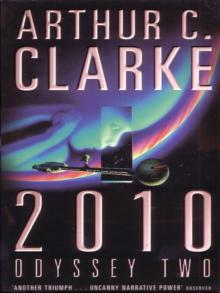 2010: Odyssey Two
2010: Odyssey Two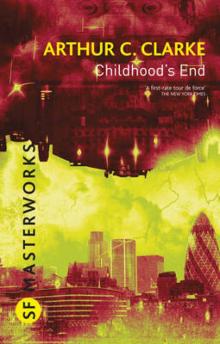 Childhood's End
Childhood's End 3001: The Final Odyssey
3001: The Final Odyssey The Fountains of Paradise
The Fountains of Paradise Rama: The Omnibus
Rama: The Omnibus The Hammer of God
The Hammer of God Beyond the Fall of Night
Beyond the Fall of Night Tales From Planet Earth
Tales From Planet Earth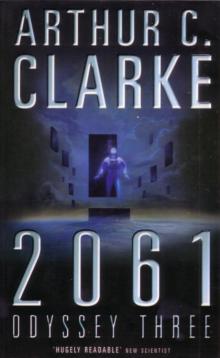 2061: Odyssey Three
2061: Odyssey Three Tales From the White Hart
Tales From the White Hart The City and the Stars/The Sands of Mars
The City and the Stars/The Sands of Mars The Star
The Star Imperial Earth
Imperial Earth The Light of Other Days
The Light of Other Days Firstborn
Firstborn The Other Side of the Sky
The Other Side of the Sky Cradle
Cradle The Wind From the Sun
The Wind From the Sun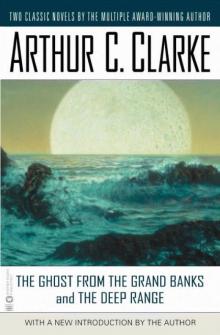 The Ghost From the Grand Banks and the Deep Range
The Ghost From the Grand Banks and the Deep Range The Deep Range
The Deep Range Expedition to Earth
Expedition to Earth A Fall of Moondust
A Fall of Moondust Dolphin Island (Arthur C. Clarke Collection)
Dolphin Island (Arthur C. Clarke Collection) Richter 10
Richter 10 The City and the Stars
The City and the Stars Tales of Ten Worlds
Tales of Ten Worlds Dolphin Island
Dolphin Island Expedition to Earth (Arthur C. Clarke Collection: Short Stories)
Expedition to Earth (Arthur C. Clarke Collection: Short Stories) Sunstorm
Sunstorm Rendezvous with Rama
Rendezvous with Rama The Collected Stories of Arthur C. Clarke
The Collected Stories of Arthur C. Clarke Trouble with the Natives
Trouble with the Natives Rama Revealed r-4
Rama Revealed r-4 The Sixth Science Fiction Megapack
The Sixth Science Fiction Megapack Firstborn to-3
Firstborn to-3 The Ghost from the Grand Banks
The Ghost from the Grand Banks Into the Comet
Into the Comet The Fires Within
The Fires Within 2061: Odyssey 3
2061: Odyssey 3 The Ninth Science Fiction Megapack
The Ninth Science Fiction Megapack The Coast of Coral
The Coast of Coral The Ghost from the Grand Banks (Arthur C. Clarke Collection)
The Ghost from the Grand Banks (Arthur C. Clarke Collection) The Space Trilogy
The Space Trilogy A Meeting With Medusa
A Meeting With Medusa 2001: A Space Odyssey (Arthur C. Clarke Collection: The Odyssey)
2001: A Space Odyssey (Arthur C. Clarke Collection: The Odyssey) Islands in the Sky (Arthur C. Clarke Collection)
Islands in the Sky (Arthur C. Clarke Collection) Rama II r-2
Rama II r-2 Glide Path (Arthur C. Clarke Collection)
Glide Path (Arthur C. Clarke Collection) The Sixth Science Fiction Megapack: 25 Classic and Modern Science Fiction Stories
The Sixth Science Fiction Megapack: 25 Classic and Modern Science Fiction Stories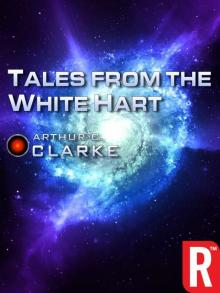 Tales from the White Hart (Arthur C. Clarke Collection: Short Stories)
Tales from the White Hart (Arthur C. Clarke Collection: Short Stories) The Reluctant Orchid
The Reluctant Orchid